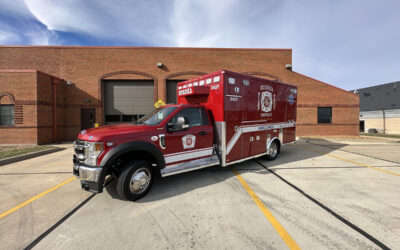
A 19th Medical Operations Squadron pediatric medical technician holds hands with a patient during a check-up June 6, 2017, at Little Rock Air Force Base, Ark. (U.S. Air Force photo by Senior Airman Mercedes Taylor)
By Jason D. Haag, CCEMT-P, CIC, CAC, CADS
Last time we discussed sick babies and some of the things that may be wrong with them. While clinical care is important, ensuring these patients are secure during transport is just as important. In this article, we will review some of the more common devices for safely transporting pediatric patients.
There are several different devices available to ground EMS. We will focus on those that are more functional when a patient is sick or injured and requires continuous monitoring and/or intervention during transport. There are several other devices that are useful when the patient is not critically sick or injured and does not require monitoring or treatment during transport.
Previous: Lightning eMotors and REV Group Subsidiary to Produce Electric Ambulances
Quantum EMS ACR4: This product installs directly to the EMS gurney and can secure a child between four pounds and 100 pounds. This does not allow for the patient to be immobilized and it machine washable. The device itself weighs just around five pounds.
Ferno NeoMate, PediMate, and PediMate+: The NeoMate is a 2.6-pound device that secures patients weighing between five to 14 pounds and does not provide immobilization. This device mounts directly to the EMS gurney and can be wiped clean. The PediMate weighs in at 2.4-pounds, secures a patient weighing from 10 pounds to 40 pounds, attaches directly to the gurney, and can also be wiped clean. Lastly, the PediMate+ is 3.5-pounds – and much like the other Ferno systems – mounts directly to the gurney and can also be wiped clean. The PediMate+ can secure a patient from 10 pounds to 100 pounds.
Quantum EMS Pediatric Vacuum Mattress: This device is 6.5-pounds and will secure a patient from four pounds to 99 pounds. This device can appropriate provide immobilization for the pediatric patient and is attached directly to the EMS gurney. This device can be wiped clean.
EMS Solutions Emergency Child Restraint: This device comes in three sizes; small, medium, and large. The small weighs 1.41-pounds and can secure a patient from 4 to 18 pounds. The medium weighs in at 1.54-pounds and can secure a patient from 13 to 46 pounds. Lastly, the large weighs 1.72-pounds and can secure a patient from 42 to 110 pounds. All three of these devices can be secured to the EMS gurney and do not provide immobilization to the pediatric patient. All three of these devices can be wiped clean.
Previous: Valley Stream (NY) Dedicates Ambulance to Late Chief
While the above items are just a small portion of the devices available to secure your pediatric patients for transport, the important message is that your pediatric patient do need to be appropriately secured. The days of the patient sitting on a caregiver’s lap are far gone. If your agency is still utilizing this practice, it is imperative that you implement a device or devices for safely transporting this patient population.
When choosing a device, have input from all agency members. Try different devices to see which secure to your stretcher the best. More importantly, members should practice with the devices regularly, so you are not fumbling with them when they are needed.
Our pediatric patients are not just little adults, and we must not secure them like adults.
Jason D. Haag, CCEMT-P, CIC, CAC, CADS, is the quality assurance analyst and clinical educator for MultiMed Billing in Baldwinsville, NY. He is also an active paramedic with Wayne County Advanced Life Support, a firefighter for The City of Geneva Fire Department, and serves on many EMS boards and community organizations. Jason is also a speaker at many EMS conferences across the country.




